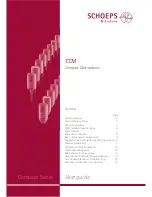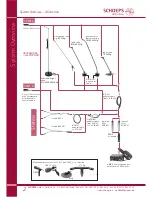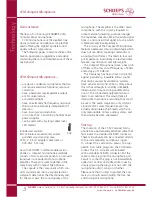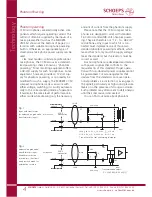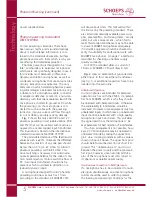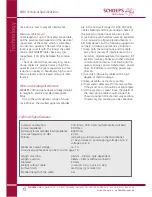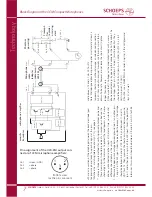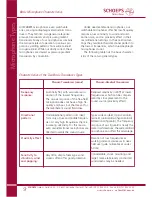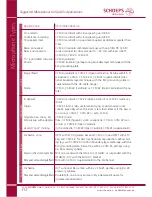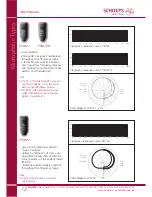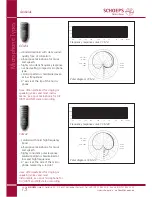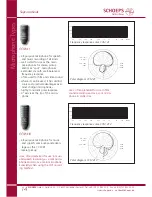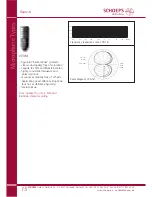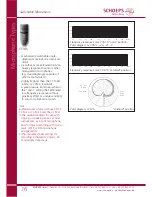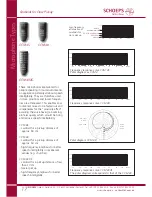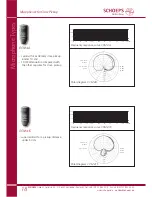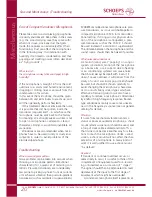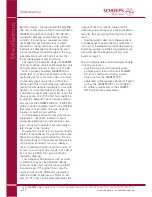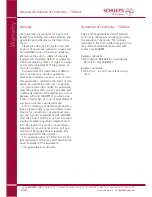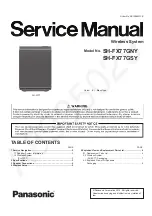
SCHOEPS
GmbH · Spitalstr. 20 · D-76227 Karlsruhe (Durlach) · Tel: +49 (0)721 943 20-0 · Fax: +49 (0)721 943 2050
www.schoeps.de · [email protected]
Basic Microphone Characteristics
9
Microphone T
ypes
Frequency
response:
Directional
pattern:
Proximity effect:
Sensitivity to
vibration, wind
and popping:
Pressure Transducers (omnis)
Essentially flat, with accurate repro-
duction of the lowest frequencies.
The on-axis response of the free-field
microphone does not have a high-fre-
quency emphasis, but that meant for
the reverberant sound field does.
Omnidirectional pattern in its ideal
form only at low and middle frequen-
cies. At very high frequencies there is
increasing directivity. For this reason
even omnidirectional microphones are
directed towards the sound source.
None
Very little; simple foam-type wind-
screens often offer good protection.
Pressure-Gradient Transducers
Reduced sensitivity (rolloff) at lower
frequencies, which can be compen-
sated by close placement to the
sound source (proximity effect)
Types: wide cardioid, Open Cardioid,
cardioid, supercardioid (hypercardioid),
bidirectional (figure-8). The frequency
response of our figure-8 is nearly the
same in all directions; the wide cardioid
microphone also offers this advantage.
Elevation of low frequencies as
working distance decreases in near-
field use (quite noticeable at under
50 cm)
Considerable; shock mounting and
larger, more elaborately constructed
windscreens may be needed.
Characteristics of the Two Basic Transducer Types
All
SCHOEPS
microphones, even switchable
ones, are single-diaphragm electrostatic trans-
ducers. They fall into two general categories:
pressure transducers and pressure-gradient
transducers. Many of our microphones combine
the two principles of operation in various pro-
portions, yielding patterns from wide cardioid
to supercardioid. While not strictly correct, these
microphones are classed as pressure-gradient
transducers by convention.
Unlike dual-membrane microphones, our
switchable microphones offer flat low-frequency
response, low sensitivity to wind and solid-
borne noise, and no proximity effect in their
omnidirectional settings. In their cardioid set-
tings they maintain their directional pattern to
the lowest frequencies, which dual-diaphragm
microphones do not.
The following table lists the basic character-
istics of these two general types.

